Is It Healthy to Sleep with Socks On? Benefits and Tips
Ever wondered if slipping on a pair of socks before bedtime could actually benefit your health? The age-old question of whether it's healthy to sleep with socks on has sparked debates and divided opinions. So, should you embrace the warmth and comfort of socks at night, or is it best to let your toes roam free under the covers for sleep hygiene and movement sleep?
Let's unravel the mystery together.
- Wearing socks to bed can improve sleep quality by aiding in better temperature regulation.
- For those with sleep disorders like insomnia, wearing socks to bed can help promote relaxation and improve sleep patterns.
- Socks can be beneficial in preventing menopausal hot flashes by regulating body temperature during the night.
- Individuals with Raynaud's syndrome can find relief by wearing socks to bed to keep their feet warm.
- Socks can help in avoiding cracked feet and maintaining foot health while sleeping.
- Choosing the right socks for sleeping is essential for comfort and maximising the benefits for a good night's sleep.
Benefits of wearing socks to bed
Improved Blood Circulation
Wearing socks to bed can improve blood circulation by warming your feet. This helps in preventing numbness and tingling sensations, ensuring a restful night's sleep.
Socks act as insulation, maintaining optimal blood flow to the feet and throughout the body. Proper circulation is crucial for overall health and can prevent issues like cold extremities.
The warmth provided by socks promotes vasodilation, widening blood vessels to enhance blood flow. This is especially beneficial for individuals with poor circulation or conditions like Raynaud's disease.
Body Temperature Regulation
Regulating body temperature is essential for quality sleep. Socks help keep your feet warm without causing overheating, contributing to a comfortable sleeping environment.
By trapping heat close to the skin, socks assist in thermoregulation, preventing temperature fluctuations that can disrupt sleep patterns. Maintaining a stable body temperature supports deep and restorative sleep cycles.
Wearing socks at night can be particularly beneficial during colder seasons or for those who struggle with maintaining warmth while sleeping. It aids in sustaining a consistent body temperature throughout the night.
Reduced Risk of Cold Feet
One of the significant benefits of wearing socks to bed is the reduced risk of developing cold feet. Cold extremities can lead to discomfort and difficulty falling asleep, which socks effectively mitigate.
ks provide an additional layer of insulation, preventing heat loss through the feet while you sleep. This simple practice can help prevent discomfort caused by chilly temperatures in the bedroom.
Keeping your feet warm with socks promotes relaxation and helps you unwind before bedtime. By maintaining warmth, socks contribute to a more peaceful and uninterrupted sleep.
Prevention of Dry and Cracked Heels
Wearing socks overnight can help in preventing dry and cracked heels, especially during harsh weather conditions or for individuals prone to skin dryness. Socks lock in moisture, promoting soft and supple skin on your heels.
Moisturising your feet before putting on socks enhances the absorption of hydrating creams, aiding in nourishing dry skin overnight. This routine can significantly improve the condition of your heels over time.
Regularly wearing socks to bed creates a barrier that retains moisture and prevents excessive evaporation from your skin. By maintaining hydration levels, socks contribute to healthier and smoother heels.
Enhanced Comfort and Relaxation
The comfort provided by wearing socks to bed cannot be understated; it adds an element of cosiness that promotes relaxation before sleep. The soft fabric against your skin creates a soothing sensation conducive to unwinding after a long day.
The socks offer a sense of security and warmth, creating a cocoon-like environment that signals your brain it's time to relax. This ritualistic practice can become a comforting bedtime routine that enhances overall well-being.
Wearing socks while sleeping can alleviate stress by inducing feelings of comfort and safety. The gentle pressure from snug-fitting socks has been shown to have a calming effect, aiding in stress relief before bedtime.
Socks for improved sleep quality
Improved Sleep Onset
Wearing socks to bed can actually help you fall asleep faster. The warmth provided by the socks helps to dilate blood vessels, promoting better circulation and signalling to your brain that it's time to rest. This can lead to a quicker onset of sleep, allowing you to drift off more easily. The socks create a cosy and secure feeling, which can be comforting and soothing as you prepare for sleep. The gentle pressure from the socks around your feet can mimic the sensation of being swaddled, triggering a sense of security that is conducive to relaxation. This feeling of comfort can help ease any anxiety or restlessness, setting the stage for a peaceful night's rest.
Temperature Regulation
One of the key benefits of wearing socks to bed is their ability to minimise disturbances from temperature changes. When your feet are cold, your blood vessels constrict in an attempt to conserve heat, which can hinder the natural process of falling asleep. By wearing a fresh pair of socks made from insulating materials like wool or fleece, you can keep your feet warm throughout the night, preventing disruptions in your sleep due to fluctuating temperatures.
Research studies have shown that maintaining an optimal temperature in bed is crucial for achieving quality rest. By wearing socks, you can help regulate your body temperature more effectively, creating a comfortable environment that promotes uninterrupted sleep. This steady temperature control supports the body's natural circadian rhythms and enhances overall sleep efficiency.
Deep Sleep Support
For those who struggle with staying asleep through the night, wearing socks could be a simple yet effective solution. By keeping your feet warm and cosy, socks encourage blood flow and prevent heat loss from the body during sleep. This not only aids in maintaining a comfortable sleeping environment but also supports uninterrupted deep sleep stages.
The use of materials such as cotton or other breathable fabrics in socks ensures that your feet stay dry and comfortable throughout the night. These natural materials allow for proper air circulation, preventing excessive sweating and discomfort while you rest. Choosing socks made from natural fibres over synthetic materials may contribute to better skin health and overall sleep quality.
Ideal temperature for better sleep
Foot Temperature
Maintaining optimal foot temperature is crucial for a good night's sleep. Research suggests that cooler feet can help individuals fall asleep faster. On the other hand, warmer feet can prevent night awakenings, promoting uninterrupted rest.
Balancing room temperature with foot warmth is essential for regulating body temperature during sleep. By ensuring that your feet are at a comfortable warmth level, you can aid in achieving a more restful and undisturbed slumber.
Bedtime Routine
Incorporating a bedtime routine that includes warming your feet before sleep can significantly impact your overall sleep quality. Activities such as taking a warm bath or using a hot water bottle on your feet can help regulate your core body temperature, preparing you for a night of deep and rejuvenating rest.
A slight drop in core body temperature is natural as part of the body's preparation for sleep. This decrease signals the production of melatonin, the hormone responsible for regulating sleep-wake cycles. By maintaining an ideal room temperature and ensuring your feet are comfortably warm, you can support this natural process and enhance your circadian rhythm.
External Factors
External factors like insomnia can disrupt this delicate balance of temperature regulation during sleep. Individuals experiencing difficulties falling or staying asleep may benefit from adjusting their bedroom environment to promote better sleep quality. Ensuring that the room is neither too hot nor too cold can play a significant role in improving overall sleep patterns.
Socks aiding sleep disorders
Restless Leg Syndrome
Wearing socks to bed can alleviate symptoms of Restless Leg Syndrome by providing gentle pressure on the legs. This pressure helps to reduce the urge to move the legs, allowing for a more restful night's sleep. Individuals with this condition often find relief in wearing socks as it calms the sensations in their legs.
Individuals suffering from Restless Leg Syndrome may benefit from wearing compression socks, which apply consistent pressure to the legs. The compression helps improve blood flow and reduces discomfort, leading to improved sleep quality. By wearing these socks, individuals can experience fewer disruptions due to leg movements during the night.
People experiencing Restless Leg Syndrome have reported better sleep quality when wearing socks to bed. The gentle pressure provided by the socks can soothe the uncomfortable sensations in their legs, allowing them to fall asleep faster and stay asleep longer.
Insomnia Management
For those struggling with insomnia, wearing socks to bed can promote relaxation by keeping the feet warm. Warm feet help dilate blood vessels, which signals to the brain that it's time for sleep. This simple act of wearing socks can trigger the body's natural sleep process and help individuals with insomnia drift off more easily.
Individuals with insomnia often have difficulty falling asleep due to cold feet, which can hinder the body's ability to relax and enter a state of rest. By wearing socks at night, they can maintain a comfortable temperature throughout the night, encouraging better sleep patterns and overall restfulness.
People suffering from insomnia may find that wearing socks provides a sense of security and comfort, promoting a feeling of relaxation conducive to falling asleep. The warmth retained by wearing socks can signal to the brain that it is time for rest, helping individuals with insomnia achieve a more peaceful night's sleep.
Night Sweats Reduction
Wearing socks to bed can reduce the chances of night sweats disrupting sleep by regulating body temperature. Socks help keep the feet warm without causing overheating, preventing excessive sweating that could wake individuals up during the night. This simple solution can significantly improve sleep quality for those prone to night sweats.
Individuals experiencing night sweats may benefit from wearing moisture-wicking socks that help regulate foot temperature and prevent excessive sweating. These specialised socks are designed to keep feet dry and comfortable throughout the night, reducing disturbances caused by sweating episodes.
People prone to night sweats have found relief in wearing breathable cotton or moisture-wicking socks to bed. These materials help absorb excess moisture and regulate foot temperature, ensuring a more comfortable sleeping environment free from interruptions caused by sweating episodes.
Other advantages of socks in bed
Fungal Infection Prevention
Wearing socks to bed can help reduce the risk of fungal infections on your feet. By providing a protective layer, socks prevent direct contact with surfaces that may harbour fungi, especially in shared living spaces.
ks act as a barrier against allergens present in bedding, such as dust mites and pet dander. This barrier minimises exposure to potential allergens, reducing the risk of allergic reactions and respiratory issues during sleep.
Enhancing skin moisture retention is another benefit of wearing socks to bed. The socks lock in moisture, preventing excessive dryness and promoting softer, healthier skin on your feet.
Improved Foot Health
By keeping your feet warm and insulated throughout the night, socks promote better blood circulation, which is essential for overall foot health. Improved circulation helps prevent issues like cold feet, numbness, and cramps.
The sense of security and comfort provided by wearing socks while sleeping can contribute to a more restful night's sleep. Feeling warm and cosy can help relax the body and mind, leading to a deeper and more rejuvenating slumber.
Additional Benefits
- Wearing socks to bed can be particularly beneficial for individuals with certain medical conditions like diabetes or Raynaud's disease.
- Socks can also prevent cracked heels and rough skin by maintaining adequate moisture levels.
- For those prone to anxiety or stress, the added warmth from socks can have a calming effect on the nervous system.
Prevention of menopausal hot flashes
Temperature Regulation
Wearing socks to bed helps regulate body temperature by keeping the feet warm, preventing heat loss during sleep. This regulation is crucial in managing menopausal hot flashes.
Sleep Quality Improvement
During menopause, hormonal fluctuations can lead to disrupted sleep patterns. However, wearing socks to bed can promote better sleep quality by helping the body maintain a consistent temperature throughout the night.
The consistency in body temperature facilitated by wearing socks prevents sudden awakenings due to feeling too hot or too cold. This uninterrupted sleep contributes to overall well-being and daytime alertness for women going through menopause.
Comfort and Support
In addition to their role in regulating body temperature, socks offer comfort and support during menopausal symptoms such as hot flashes. The soft fabric provides a gentle embrace for tired feet at the end of the day.
For women experiencing discomfort from night sweats, wearing moisture-wicking socks can help absorb excess sweat and keep the feet dry, contributing to a more comfortable sleeping environment.
Medical professionals often recommend wearing socks to bed as part of a holistic approach to managing menopausal symptoms. The simple act of putting on socks before sleep can have significant benefits for women seeking relief from hot flashes and related sleep disturbances.
Enhancing orgasm likelihood with socks
Warmth and Comfort
Sleeping with socks on maintains warmth and enhances comfort, aiding in relaxation throughout the night. The feeling of coziness can help individuals fall asleep faster.
Socks increase blood flow to the extremities, including the feet, which can have a positive impact on overall circulation. This improved circulation can enhance sensory experiences during intimate moments.
Wearing socks to bed can promote a sense of security and relaxation, allowing individuals to feel more comfortable and at ease. Couples may find that this added comfort contributes to a deeper sense of intimacy.
Sensory Experience During Intimacy
The sensation of wearing socks can heighten the sensory experience during intimate encounters. Increased blood flow to the feet due to wearing socks can lead to heightened sensitivity and arousal.
For some individuals, the act of wearing socks can trigger the release of endorphins, commonly known as "feel-good" hormones. This release of endorphins can contribute to an overall sense of pleasure and well-being during intimate moments.
In addition to enhancing physical sensations, wearing socks during intimacy can create a psychological association between warmth and comfort with pleasure. This association may lead to an increased likelihood of experiencing orgasms for some individuals.
Emotional Connection
Couples who choose to wear socks during intimate moments may also benefit from an enhanced emotional connection. The shared experience of feeling warm and comfortable together can deepen bonds and foster feelings of closeness.
- Wearing socks can help couples feel more relaxed and secure during intimate moments.
- Enhanced sensory experiences due to increased blood flow can lead to heightened arousal.
- Psychological associations between warmth, comfort, and pleasure may enhance overall satisfaction in relationships.
Relieving Raynaud’s syndrome symptoms
Maintaining Temperature
Wearing socks while sleeping can help maintain a consistent foot temperature, which is crucial for individuals with Raynaud's syndrome. This consistency prevents drastic temperature changes that can trigger symptoms.
It is essential to keep the extremities warm to prevent blood vessels from constricting. Socks act as insulators, retaining heat and ensuring a stable temperature throughout the night.
By providing warmth, socks aid in preventing rapid onset of Raynaud's attacks, where blood vessels spasm due to cold or stress. This simple measure can significantly reduce the discomfort associated with the condition.
Enhancing Circulation
One key benefit of sleeping with socks on is improved blood circulation to the extremities. For individuals with Raynaud's syndrome, adequate circulation is vital to prevent episodes of reduced blood flow.
Distal vasodilation, which refers to the widening of blood vessels in the hands and feet, can be promoted by wearing socks at night. This dilation helps combat circulatory issues commonly experienced by those with Raynaud's syndrome.
Enhanced circulation ensures that oxygen-rich blood reaches the fingers and toes, reducing the likelihood of swelling and numbness often associated with poor blood flow in individuals with Raynaud's syndrome.
Managing Symptoms
Reducing the frequency of Raynaud's attacks is a significant advantage of wearing socks while sleeping, especially for those prone to sudden flare-ups. By maintaining warmth and promoting circulation, socks play a crucial role in symptom management.
Minimising discomfort and pain associated with Raynaud's syndrome is another positive outcome of wearing socks at night. The insulation provided by socks helps alleviate symptoms such as tingling sensations and throbbing pain in extremities affected by the condition.
- Improved blood flow
- Reduced swelling
- Minimised pain
Avoiding cracked feet with socks
Moisture Retention
Wearing socks to bed can prevent moisture loss from your feet, especially during the night when the skin tends to dry out. This is particularly beneficial in colder months when the air is drier.
Socks act as a barrier, trapping the natural oils and moisture produced by your feet, keeping them hydrated throughout the night. By maintaining this moisture balance, you can avoid cracked heels and rough skin on your soles.
When you sleep with socks on, they create a warm and moist environment around your feet, similar to a warm footbath, which helps soften the skin and prevents it from drying out excessively.
Protection from Dryness
The constant friction between your feet and the bedsheets can strip away moisture from your skin. Wearing socks acts as a protective layer that shields your heels and soles from this friction, reducing the risk of developing cracks and calluses.
By covering your feet with socks, you are essentially providing a barrier that locks in moisture, preventing it from evaporating too quickly. This not only helps in maintaining soft and supple skin but also aids in preventing discomfort caused by dryness.
Moreover, if you apply foot creams before wearing socks to bed, the socks help in enhancing the effectiveness of these creams by ensuring better absorption into the skin. This leads to improved hydration levels and overall foot health.
Promotion of Healthy Feet
Sleeping with socks on can contribute to promoting soft and healthy feet by creating an optimal environment for skin repair and rejuvenation. The warmth provided by the socks improves blood circulation to the feet, aiding in cell regeneration during sleep.
In addition to preventing dryness and cracking, wearing socks at night can also help in maintaining an ideal temperature for your feet. This not only ensures comfort while sleeping but also supports overall foot health by reducing the chances of developing issues like fungal infections due to excessive moisture or cold temperatures.
Furthermore, incorporating this simple habit into your bedtime routine can have long-term benefits for your foot health, ensuring that you wake up with nourished and revitalised feet each morning.
Best socks for sleeping
Choose Breathable
Selecting socks made from breathable materials like cotton or bamboo can enhance comfort during sleep. These fabrics allow air circulation, preventing overheating and ensuring a restful night's sleep.
Breathable socks help regulate temperature, keeping your feet cool in summer and warm in winter. By choosing these materials, you can maintain optimal foot health and overall well-being.
Cotton socks are soft and gentle on the skin, reducing the risk of irritation and discomfort while sleeping. Their natural fibres absorb moisture, keeping your feet dry throughout the night.
Chose for Seamless Socks
Opting for seamless sock designs is crucial to prevent irritation and rubbing against your skin while you sleep. Seamless socks eliminate potential friction points, reducing the likelihood of developing blisters or sores.
Seamless socks are ideal for individuals with sensitive skin or those prone to skin conditions like eczema. By choosing seamless options, you can enjoy uninterrupted sleep without any discomfort.
These designs ensure a smooth surface inside the sock, preventing any seams from digging into your skin or causing distractions during the night.
Consider Moisture-Wicking
Choosing socks with moisture-wicking properties helps keep your feet dry and comfortable throughout the night. These features draw sweat away from your skin, preventing dampness that can lead to odour or fungal infections.
- Pros:
- Prevents odour
- Reduces the risk of fungal infections
- Cons:
- May be pricier than regular socks
Moisture-wicking socks are especially beneficial for individuals who experience excessive sweating during sleep or have a tendency towards sweaty feet.
Select Snug Fit
Opt for socks that provide a snug yet non-restrictive fit to promote circulation and prevent constriction. A well-fitted sock ensures comfort without cutting off blood flow to your feet while you rest.
- Pros:
- Improves blood circulation
- Reduces swelling in the feet
- Cons:
- Too tight may cause discomfort
A snug fit also prevents the socks from slipping off during the night, ensuring consistent coverage and warmth for your feet.
Look for Thermal-Regulating
Thermal-regulating socks offer all-season comfort by adapting to your body temperature as you sleep. These innovative features keep your feet cosy in winter and cool in summer, promoting quality rest regardless of the season.
- Pros:
- Versatile for different climates
- Enhances overall sleep quality
- Cons:
- May be thicker than regular socks
Impact on sleep hygiene
Regular Care
Changing and washing socks regularly is crucial for maintaining good sleep hygiene. By doing so, you prevent the build-up of bacteria and odours, ensuring a fresh and clean sleeping environment.
Maintaining cleanliness in bed is essential for quality sleep. Dirty socks can transfer dirt and germs to your bedding, affecting your overall sleep quality negatively.
Foot Health
Wearing socks to bed supports overall foot health. It helps in keeping the feet warm, aiding in better circulation and preventing issues like dry skin or cracked heels.
Hygienic Sleep Environment
Sleeping with clean socks contributes to a comfortable and hygienic sleep environment. It ensures that your feet are protected from any dust or allergens present in your bedding.
Circadian Rhythms
Maintaining good sleep hygiene by wearing clean socks to bed can positively impact your circadian rhythms. A comfortable sleeping environment promotes better sleep patterns, helping you fall asleep faster and wake up feeling refreshed.
Closing Thoughts
You've now explored the numerous benefits of wearing socks to bed. From improving sleep quality and aiding sleep disorders to preventing menopausal hot flashes and relieving Raynaud’s syndrome symptoms, socks can truly enhance your sleep hygiene. Remember to choose the best socks for sleeping to maximise these advantages. Don't underestimate the power of this simple bedtime habit in ensuring a restful night's sleep.
Make it a habit to slip on your favourite pair of socks before hitting the hay tonight. Your feet will thank you, and you might just find yourself enjoying deeper, more rejuvenating sleep. Sweet dreams!
Frequently Asked Questions
Is it healthy to sleep with socks on?
Wearing socks to bed can help improve sleep by keeping your feet warm, aiding in vasodilation and promoting relaxation. However, it's essential to choose breathable materials to prevent overheating during the night.
Can wearing socks enhance sleep quality?
Yes, wearing socks to bed can improve sleep quality by helping you fall asleep faster and experience fewer disturbances during the night. The warmth provided by socks promotes vasodilation, which aids in relaxation and enhances overall comfort.
Are there specific types of socks that are best for sleeping?
Opt for socks made from natural, breathable materials like cotton or wool. These materials help regulate temperature, wick away moisture, and provide optimal comfort for a restful night's sleep.
How can wearing socks benefit individuals with sleep disorders?
For individuals with conditions like Raynaud's syndrome or those prone to cold feet, wearing socks can help promote better blood circulation and maintain a comfortable temperature throughout the night, potentially reducing symptoms and improving sleep quality.
Can wearing socks prevent menopausal hot flashes during sleep?
Wearing socks to bed can aid in regulating body temperature, potentially reducing the frequency and intensity of menopausal hot flashes. By keeping your feet warm, you may help stabilise your overall body temperature and minimise discomfort during the night.









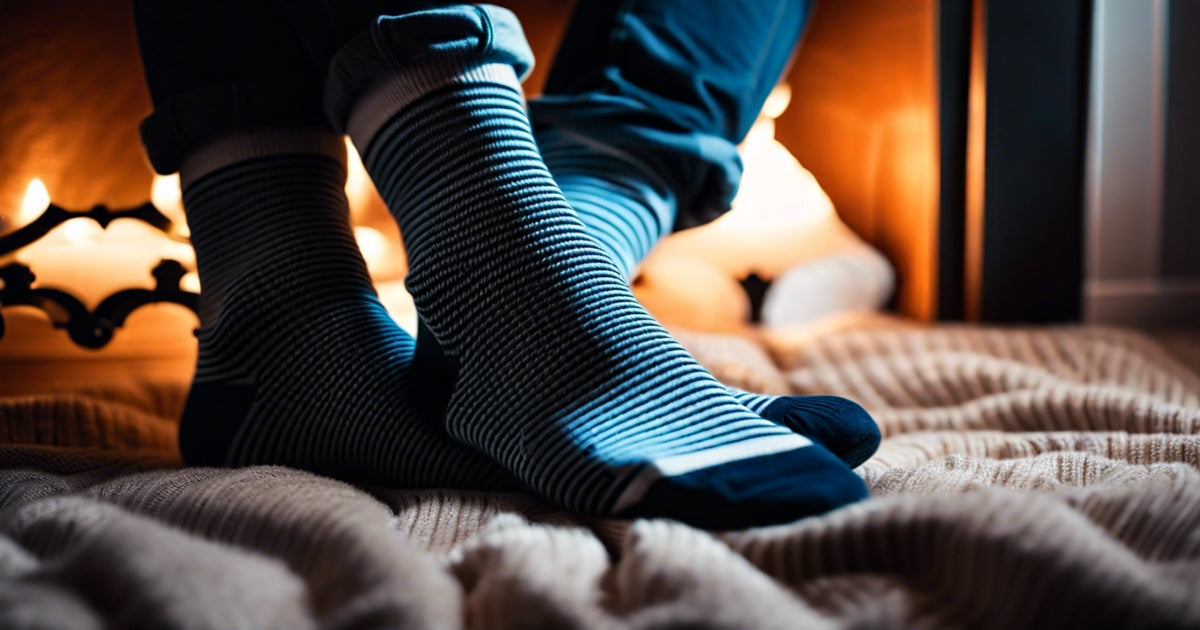
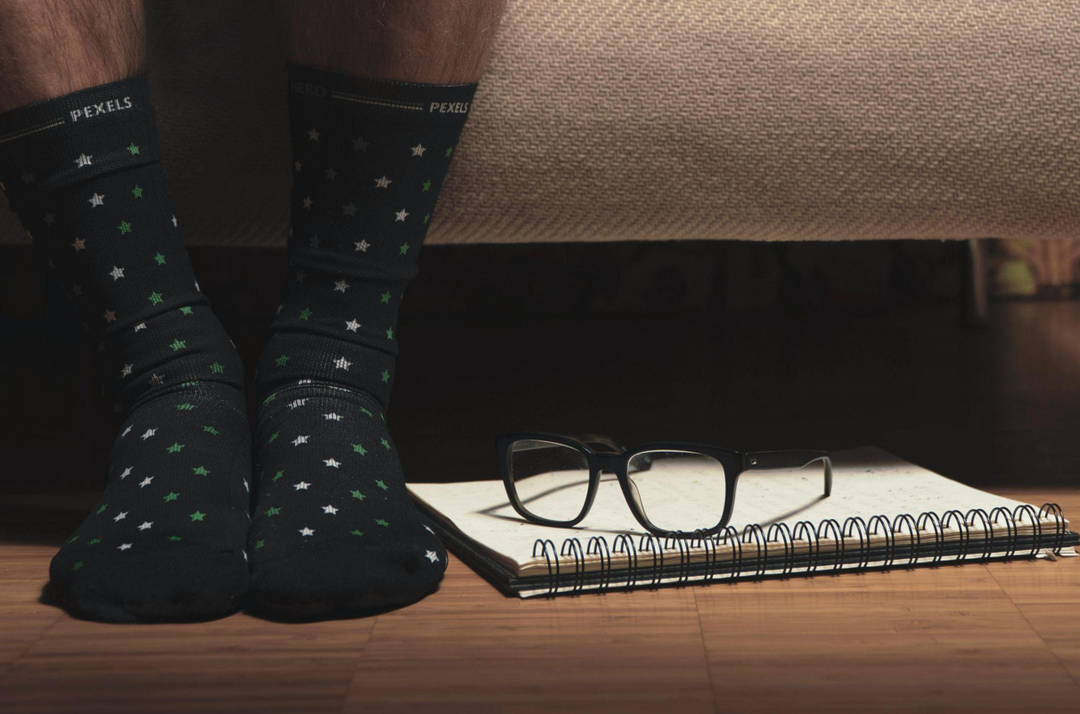
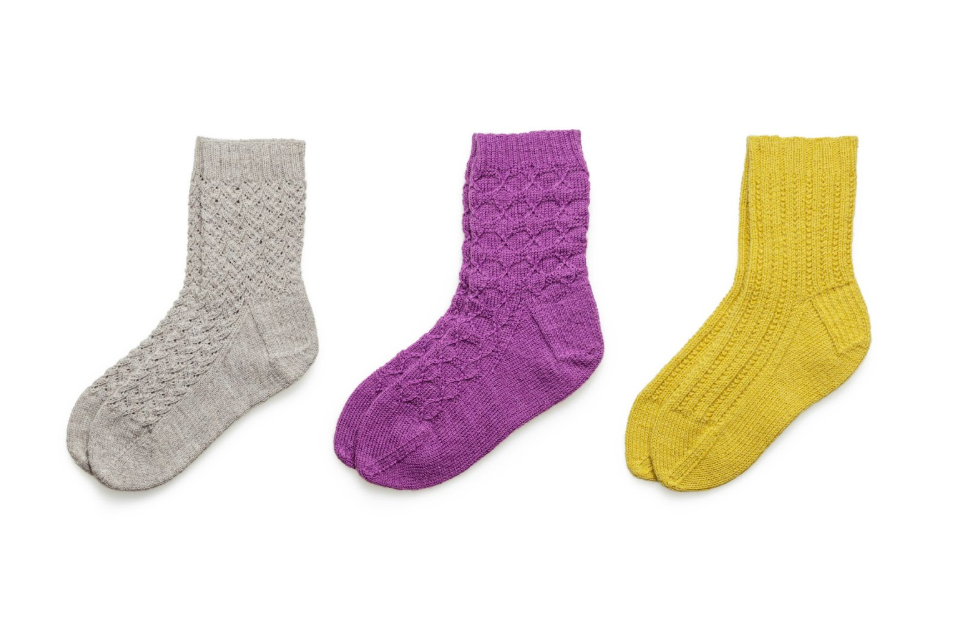



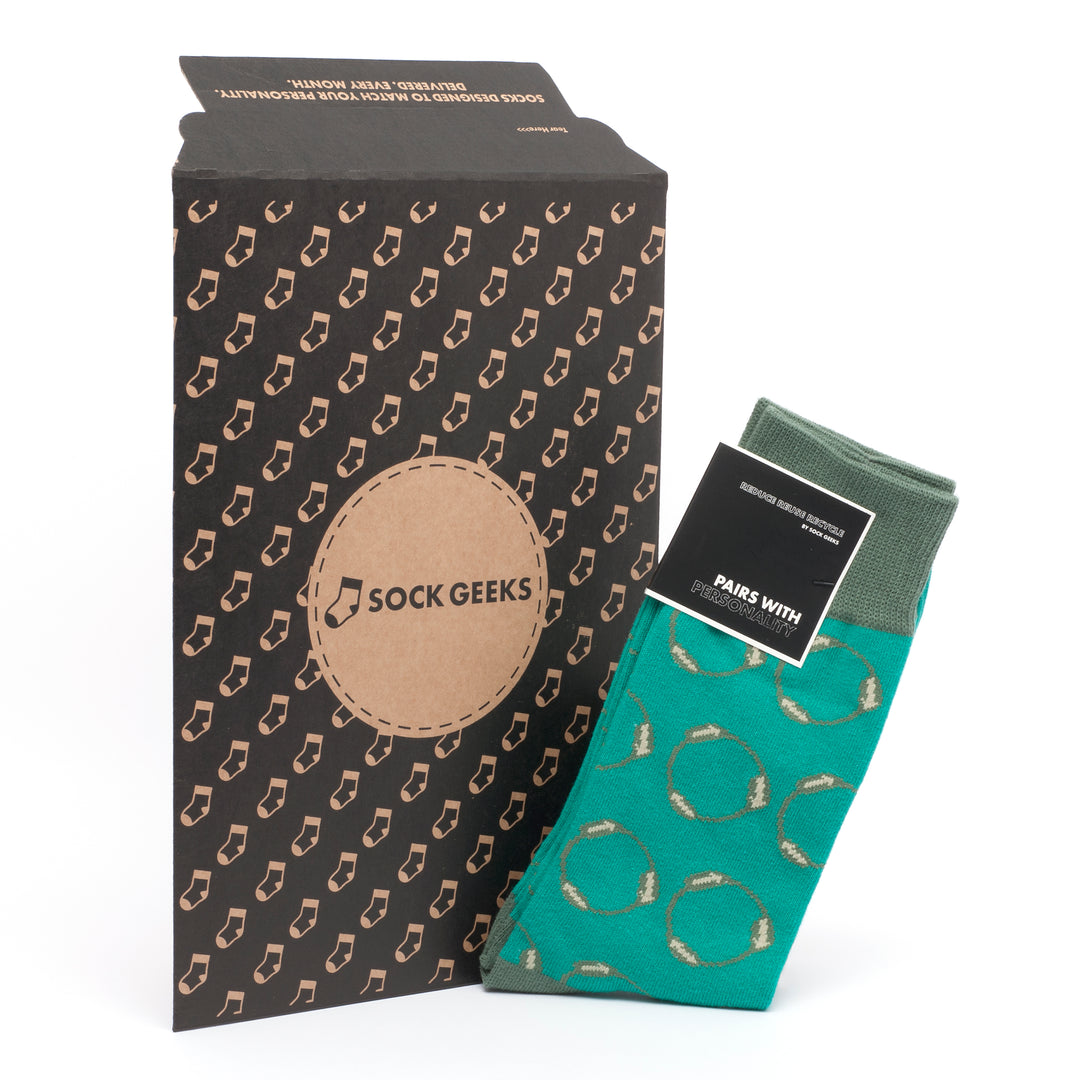
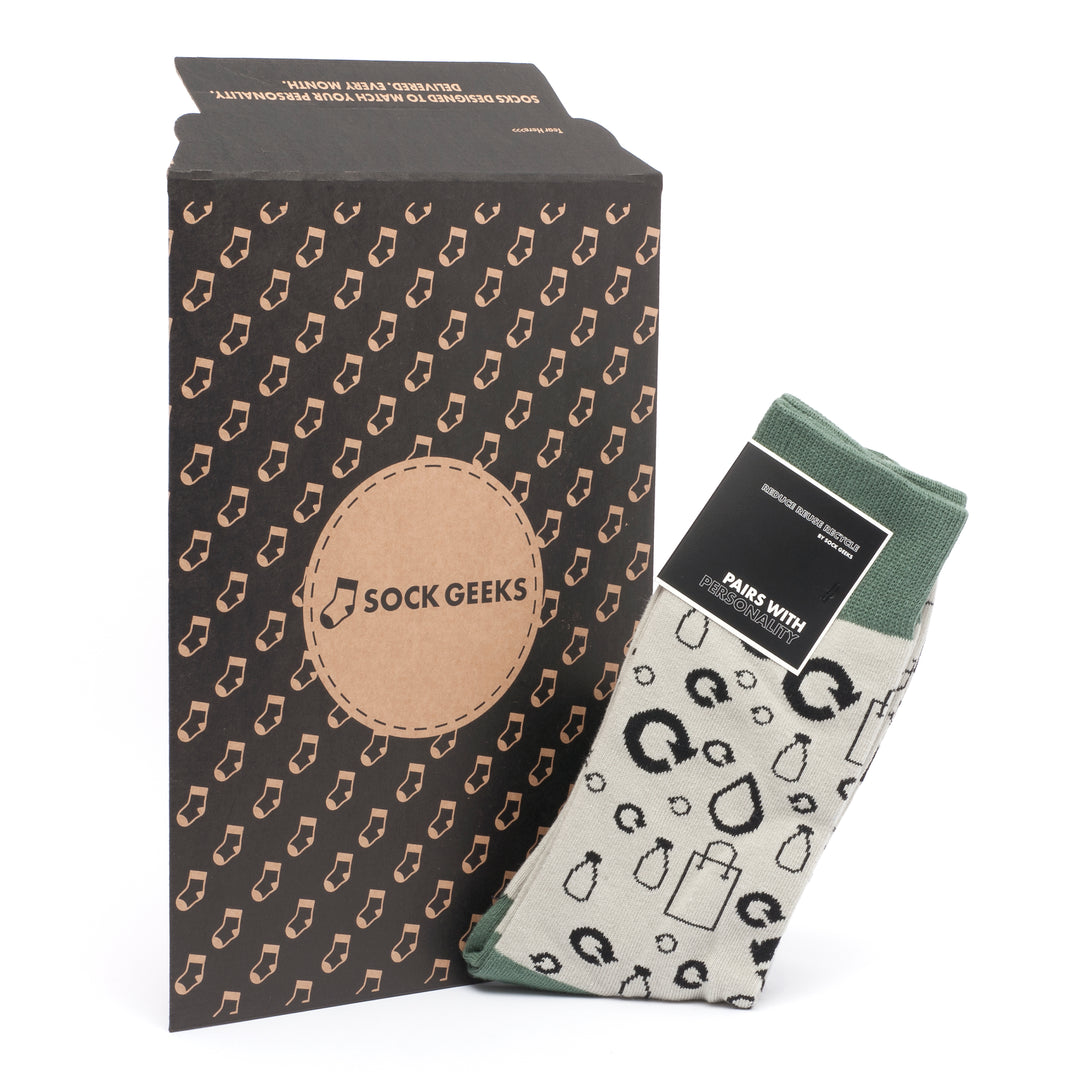



Leave a comment